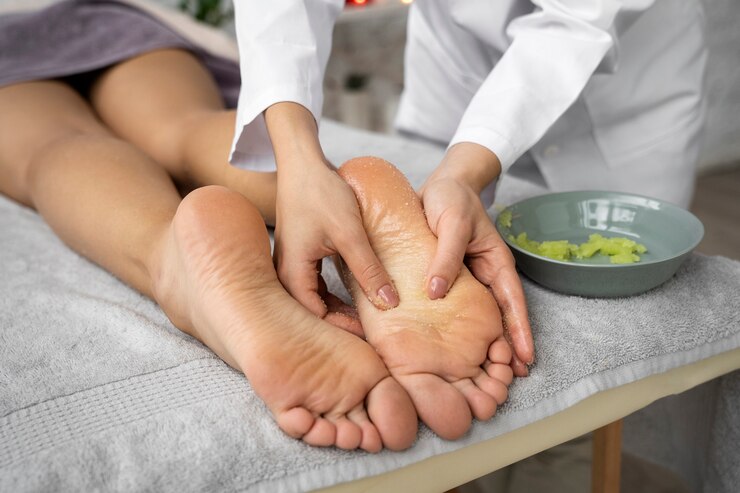The Complete Guide to Cranial Remolding Helmets: Benefits, Process, and More


If your baby has deformational plagiocephaly or brachycephaly, a cranial remolding helmet may be recommended. The concept of reshaping an infant’s soft, growing skull can sound concerning for parents. However, these customized helmets gently round out flattened areas over time for better symmetry and proportion. Read on for a comprehensive guide explaining how cranial remolding helmets work and what to expect for your child.
An Introduction to Plagiocephaly and Brachycephaly
Plagiocephaly refers to flattening on one side of the head, causing facial and ear misalignment. Brachycephaly is flattening across the back of the skull, widening its overall shape and appearance. Together, these conditions are called deformational or positional plagiocephaly and brachycephaly.
While alarming for parents, in most cases the flattening is mild and improves on its own as the baby grows. However, moderate to severe flattening may warrant treatment with a cranial remolding helmet to help reshape the head for symmetry and proper development.
Causes of Deformational Plagiocephaly and Brachycephaly
Infants develop these conditions when external forces mold the skull while it’s still soft and growing. Possible contributing factors include:
- Early birth before full skull hardening
- Limited tummy time or neck control
- Consistent back sleeping or head positioning
- Multiple births crowding the womb
- Delayed sitting or confined carrying
- Premature fusing of skull bones
Though worrying, these causes are generally harmless. A consultation with your pediatrician or specialist will determine the severity and treatment recommendations.
Signs of Plagiocephaly and Brachycephaly in Babies
Parents are often the first to notice subtle signs. Key indicators to bring up with your doctor include:
- Flattening on one side of the head, causing facial asymmetry
- Ears misaligned, with one ear shifted forward or pushed out
- Widening and bulging of the back of the head
- Forehead protruding on one side and flattened on the other
- Bald spots or head not growing proportionally
- Tilting of the head to one side consistently
- Delayed gross motor development like rolling over
Don’t hesitate to mention any observations or concerns. Early assessment means resolving flattening most effectively.
How Cranial Helmets Correct Deformities
Once positional plagiocephaly or brachycephaly is diagnosed, the pediatrician may prescribe a customized cranial helmet for babies. Worn 23 hours a day, the rigid yet lightweight helmets apply mild constant pressure to protruding areas of the skull to encourage better growth in flattened regions.
Key design elements include:
- Deep posterior indent adds space for rounded head growth.
- Raised left/right indent expands constricted sides.
- Open face andRaised forehead lifts flattened forehead.
- Strategic cutouts prevent pulsing sutures from fusing.
The goal is a gradual, dynamic remolding process as the baby’s natural growth gently reshapes their head to fit the mold. Frequent helmet adjustments ensure an ideal fit over 3-6 months of care.
The Initial Consultation and Measurement Process
Fitting your child for a cranial remolding helmet begins with precise digital measurements of their unique head shape. At the orthotics clinic, the process goes as follows:
- Complete health history and discussion of concerns with practitioner
- Visual assessment of the head’s symmetry and structures
- Gentle measurement of head circumference with a flexible tape
- Painless capture of 3D head shape using a handheld laser scanner
- Additional health scans as needed to design appropriate corrective forces
- Discussion of expected helmet fit, use, and care instructions
The scan data generates a highly detailed 3D model of your baby’s head to design a personalized helmet. This precision ensures a gentle, gradual remolding process.
How the Custom Helmet is Fabricated
Using the 3D scan, orthotists design a digital model of the helmet with optimized indentations and contouring to guide your child’s growth. The helmet itself is milled from a block of firm, durable polyurethane foam.
Venting holes are added for comfort, then each helmet is lined with cushioning pads. Straps, pads, and adjustments are included to ensure a secure fit. The finished device applies targeted molding forces while remaining lightweight and breathable.
The entire process from scan to final fitting takes 2-3 weeks. You’ll receive home care instructions for the best experience. Follow-up appointments allow adjustments as the head shape changes.
What to Expect During the Initial Helmet Fitting
At the first fitting appointment, the orthotist educates you on properly putting on, caring for, and monitoring the helmet. Key points include:
- Proper donning/doffing without discomfort
- Ideal fit – snug but not tight
- Scheduling and protocols for wearing
- Regular skin checks to prevent irritation
- Cleaning and sanitizing techniques
- Safe activities and precautions
- Signs of needed adjustment
- Importance of compliance for results
- Follow-up schedule and communication
With your involvement, the helmet gently rounds out flat spots for the best outcome. Consistency is key.
What Daily Helmet Therapy Involves
To be effective, helmets must be worn 23 hours a day. Stick to this regimen:
- Put the helmet on in the morning after changing diapers.
- Only remove for bathing and cleaning the helmet daily.
- Periodically check skin for red marks indicating an adjustment is needed.
- Prevent impact bumps or hits to the helmet. Supervise tummy time.
- Allow infant to develop neck strength and motor skills under guidance.
- Monitor for proper fitting and be aware of any new flat spots developing.
- Keep all appointments for practitioner assessment and helmet adjustments.
With diligence, the helmet remolds the skull gradually over a few months.
Expected Timeline and Results
Helmet therapy takes 3-6 months depending on severity. You can expect:
- Week 1 – The baby adjusts to consistent helmet wear, with expected fussiness at first.
- Month 1 – The head shape slowly improves as the helmet guides growth.
- Month 3 – Noticeable improvements to flattened areas and symmetry.
- Month 6 – Significant correction of asymmetry for proper development.
- 2 weeks post-helmet – Some minor flattening possibly rebounds temporarily.
- 4-6 months post-helmet – The rounded, proportionate result remains long-term.
While not overnight, consistency pays off with a properly shaped head!
Caring for Your Baby While in a Helmet
Life continues while your child undergoes helmet therapy. Keep these tips in mind:
- Expect more sweat with decreased ventilation. Change helmet pads frequently.
- Prevent pressure sores with regular skin checks. Massage any reddened areas.
- Be cautious of neck strain. Limit time in car seats and carriers.
- Provide extra tummy time and floor play for muscle development.
- Adapt clothing and bibs to comfortably fit under the helmet.
- Take peaceful breaks during fussy periods. Stay consistent.
- Celebrate each achievement your child masters in their helmet!
With preparation, helmet therapy integrates smoothly into your baby’s routine.
Indicators for Pediatric Helmet Therapy
Consult your pediatrician if you notice:
- Consistent flatness remaining after 4-5 months old.
- Asymmetry exceeding 1 centimeter side to side.
- Ear displacements or forehead protrusions.
- Motor delays like late sitting, crawling, or neck control.
- Worsening head tilt and preference to one side.
- Very wide or narrow head shape.
Early intervention is important, as after 10-12 months bone starts hardening. Don’t hesitate to raise any concerns.
What Conditions are Contraindications?
Some medical factors may preclude helmet use:
- Abnormally rapid or slow growth
- Abnormal increase in head circumference
- Neurologic disorders and brain malformations
- Premature fusing of skull sutures (craniosynostosis)
- Low muscle tone impairing neck control
- Uncontrolled seizures creating fall risks
- Allergies to helmet materials
- Other abnormalities requiring neurosurgery
A specialist assessment determines if helmets are contraindicated. Most babies still qualify for safe remolding.
Potential Risks To Be Aware Of
Like any treatment, helmets have some risks:
- Skin irritation or pressure sores from poor fit
- Allergic reactions to liner materials
- Neck strain if not strengthening appropriately
- Misshaping if not monitored consistently
- Delayed effects if compliance is poor
- Costs and insurance coverage difficulties
However, an experienced cranial team minimizes these risks with proper care. Gentle shaping does not harmfully restrict growth. Still discuss concerns with your providers.
Working With Your Medical Team
A collaborative approach ensures the best care:
- Follow pediatrician recommendations to improve flatness before considering helmets.
- Seek experienced cranial specialists trained in latest techniques.
- Discuss expectations realistically – mild asymmetry may remain.
- Communicate regularly on fit, use, skin checks, and any parent concerns.
- Attend all follow-up appointments for adjustments.
- Voice any questions and address challenges as they arise.
- Celebrate each improvement! Your commitment shapes the process.
Paying for Cranial Remolding Helmets
Helmets average $2,000-$3,000 out of pocket. However:
- Many insurance plans cover a percentage, especially for moderate/severe cases.
- Medicaid and other assistance programs sometimes contribute.
- Payment plans make costs manageable. Discuss options with your provider.
- Grants from non-profits like CAPPS Kids assist qualifying families.
- Advocate with insurance for medically necessary therapy. Appeal denials.
- If cost prohibits care, try repositioning primeiro improve flatness.
Seek guidance navigating potential helmet costs. Don’t let finances deter remedies.
Long-Term Outcomes and Benefits
Consistent helmet use improves head symmetry and appearance. Preventing progressive flattening also benefits development. Benefits include:
- Improved facial and dental alignment
- Normal skull proportions as the brain expands
- Enhanced hearing by correcting ear position
- Better eye alignment and visual focus
- Relief from neck strain or torticollis
- Smoother motor development and coordination
- Increased self-esteem for child and parents
While mild flatness is harmless, improvements help babies meet milestones.
Conclusion
Being assessed for cranial anomalies allows early correction when needed. Though helmets appear drastic initially, parents report the process is very manageable. With an experienced cranial team providing compassionate support and clear guidance, the devices gently round out your baby’s growing head. Consistency is key, but the payoff is lasting. Helmet therapy during infancy prevents compensations later on. By partnering closely with providers, parents help give their children the very best start in life.



